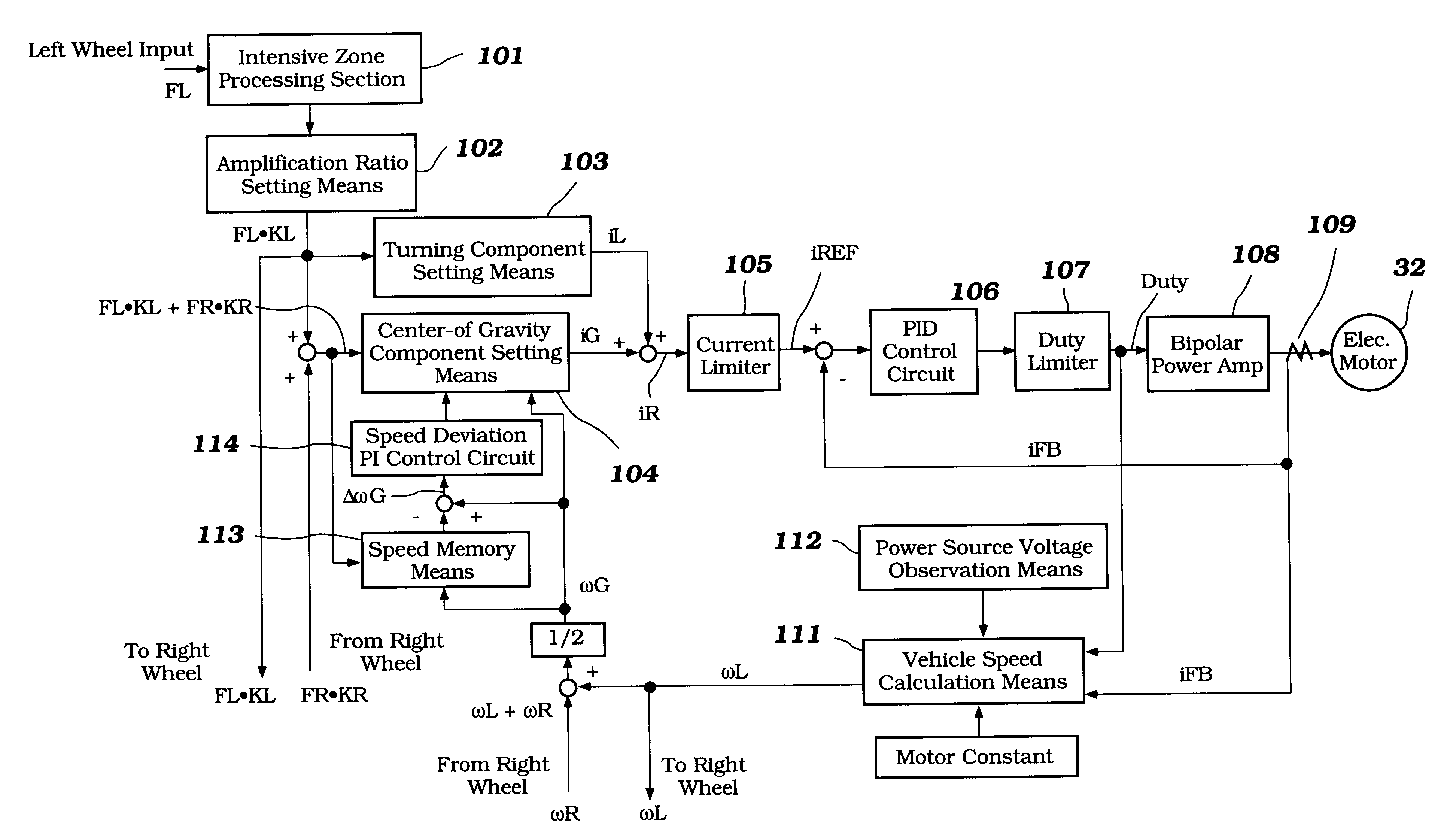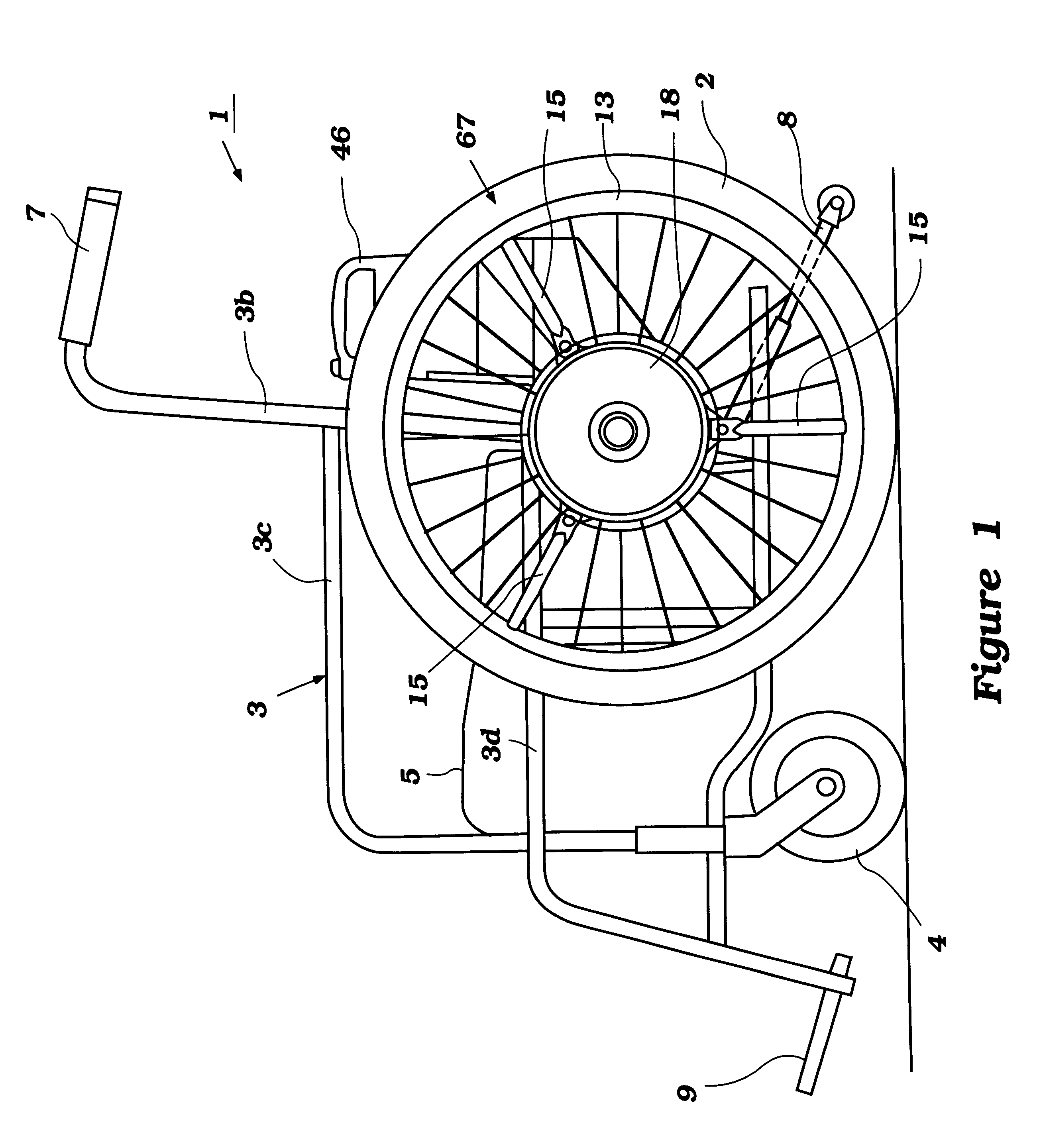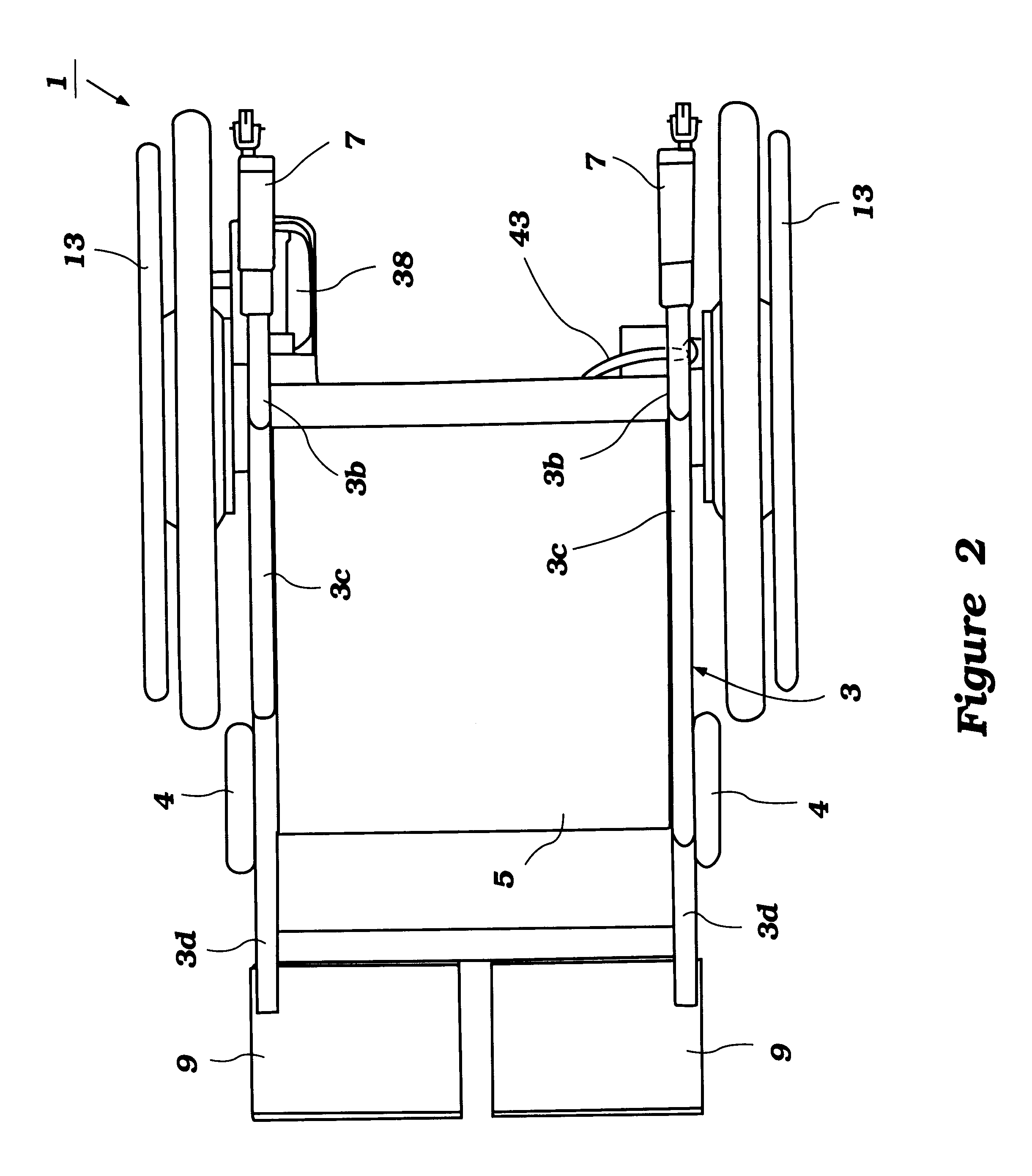Wheel chair with auxiliary power
a technology of auxiliary power and wheel chair, which is applied in the direction of motor/generator/converter stopper, dynamo-electric converter control, instruments, etc., can solve the problems of time-attenuation rate, more running, and problems with conventional power-assisted wheelchairs
- Summary
- Abstract
- Description
- Claims
- Application Information
AI Technical Summary
Benefits of technology
Problems solved by technology
Method used
Image
Examples
first embodiment
The First Embodiment
A power-assisted wheelchair 1 of this embodiment has two, right and left wheels 2 driven for rotation with the human power applied to each wheel 2 and assist power added to each wheel 2 as commensurate with the human power. The wheelchair is constituted by attaching the wheels 2 serving as the drive wheels freely removably to the right and left sides of an existing manual wheelchair of a folding type. The front and rear portions of a vehicle body frame 3 made of pipes are supported for free movement with paired right and left casters 4 and wheels 2.
A cloth-made seat 5 for a rider to sit on is disposed in the center of the vehicle body frame 3. Here, the vehicle body frame 3 as shown in FIG. 3 has paired front and rear cross members 3a in an X-shape pivoted at their intersection with a shaft 6 so that the vehicle body may be folded around the shaft 6.
Paired right and left back pipes 3b are disposed vertically in the rear part of the vehicle body frame 3, with thei...
second embodiment
The Second Embodiment
Next, the second embodiment of the invention will be described in reference to FIGS. 12 and 13.
The power-assisted wheelchair of this embodiment has the same fundamental constitution as that of the first embodiment and so its explanation will be omitted. Furthermore, in FIG. 12, the same elements as those in FIG. 9 are provided with the same symbols.
The power-assisted wheelchair of this embodiment is provided with means for detecting the running speed, and means for detecting the running direction (forward or reverse) (specifically, a vehicle speed calculation means 111 which will be described later), and is adapted to change the time-attenuation rate of the assist power according to the magnitude of the running speed, running direction (forward or reverse), and the direction (forward or reverse) of the assist power.
Here, a method of determining the running speed (center-of-gravity speed) will be described in reference to FIG. 12.
As shown in FIG. 12, the controll...
third embodiment
The Third Embodiment
Next, the third embodiment of the invention will be described in reference to FIGS. 14 through 16.
The power-assisted wheelchair of this embodiment has also the same fundamental constitution as that of the first embodiment and so its explanation is omitted. Furthermore, in FIG. 14, the same elements as those in FIG. 9 are provided with the same symbols.
As shown in FIG. 14, the power-assisted wheelchair of this embodiment has a speed memory means 113 for storing the running speed (center-of-gravity speed G) at the time point when the human power (FLKL+FRKR) applied to the wheel 2 is removed, and a speed deviation PI control circuit 114 for detecting the deviation G between the running speed detected with the speed memory means 113 and the current running speed (center-of-gravity speed G). The value determined by integrating the speed deviation G with time is outputted to the center-of-gravity component setting means 104.
Here, this embodiment is characterized in tha...
PUM
 Login to View More
Login to View More Abstract
Description
Claims
Application Information
 Login to View More
Login to View More - R&D
- Intellectual Property
- Life Sciences
- Materials
- Tech Scout
- Unparalleled Data Quality
- Higher Quality Content
- 60% Fewer Hallucinations
Browse by: Latest US Patents, China's latest patents, Technical Efficacy Thesaurus, Application Domain, Technology Topic, Popular Technical Reports.
© 2025 PatSnap. All rights reserved.Legal|Privacy policy|Modern Slavery Act Transparency Statement|Sitemap|About US| Contact US: help@patsnap.com



